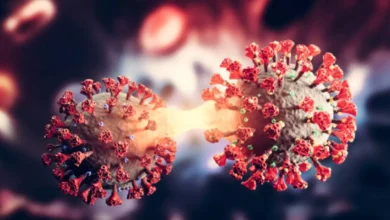 |
| The Cartwheel Galaxy from the James Webb Space Telescope |
A Galaxy Reborn: Unveiling the Cartwheel’s Origins
Located approximately 500 million light-years away in the Sculptor constellation, the Cartwheel Galaxy is a truly magnificent sight. Unlike the familiar spiral structure of our Milky Way, the Cartwheel boasts a distinct, ring-shaped appearance. This unique morphology is the result of a violent collision, estimated to have occurred hundreds of millions of years ago, between the Cartwheel and a smaller galaxy.
The impact sent shockwaves rippling through the Cartwheel, triggering a burst of star formation in its outer ring. This ongoing stellar creation process is a defining feature of the galaxy, making it a prime target for astronomers studying galactic evolution after major collisions.
Unveiling the Cartwheel’s Secrets with the JWST
Prior to the JWST’s observations, astronomers relied on optical telescopes, which struggle to penetrate the Cartwheel’s dust-laden environment. However, the JWST’s infrared vision provides an unprecedented view, allowing scientists to peer through the dust and witness the birth of new stars within the outer ring.
The image also reveals a vibrant inner ring, likely home to an older stellar population and a central core shrouded in mystery. The JWST’s data promises to shed light on the Cartwheel’s central black hole, its potential influence on surrounding gas and dust, and its role in shaping the galaxy’s overall evolution.
A Celestial Rosetta Stone: The Importance of the Cartwheel Galaxy
The Cartwheel Galaxy serves as a crucial piece of the cosmic puzzle. Studying its post-collision state helps us understand how galaxies react to such major events. These insights can be applied to countless other galaxies throughout the observable universe, many of which bear the scars of past collisions.
Furthermore, the Cartwheel’s unique structure allows researchers to isolate and study specific stellar populations and star formation processes within different regions of the galaxy. This provides valuable data for developing models that explain how galaxies form, evolve, and interact with their environments.



